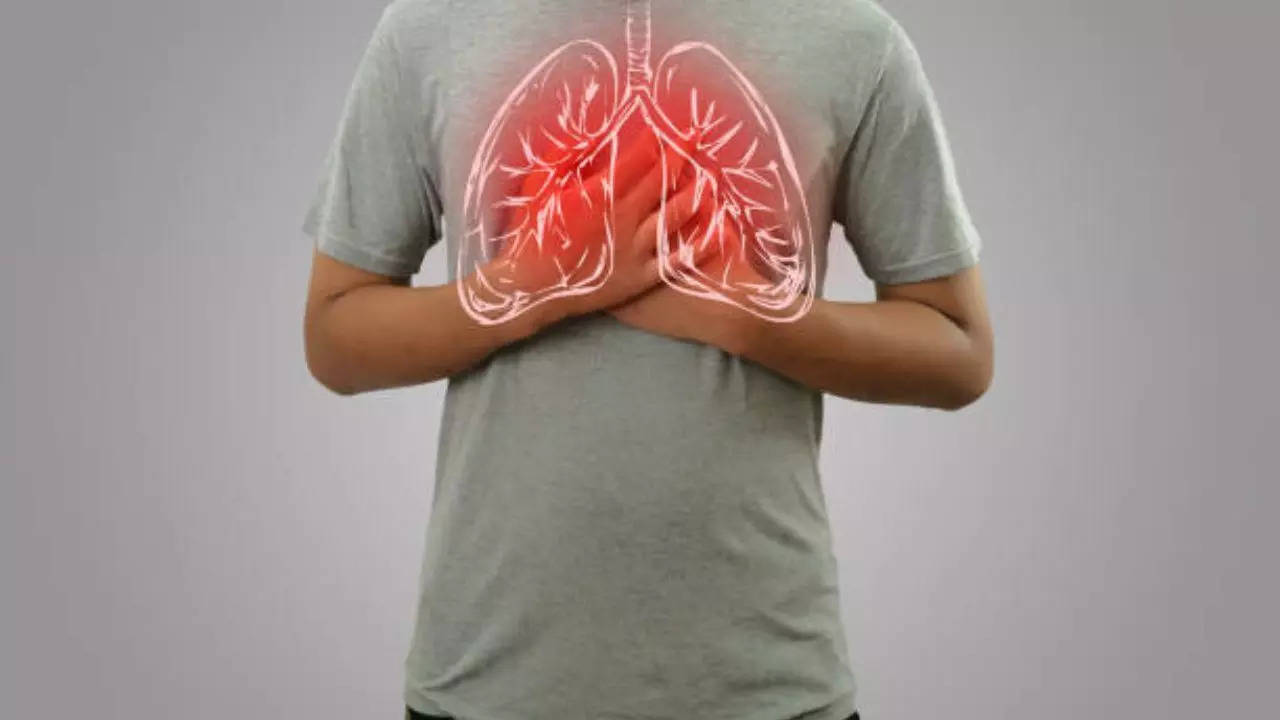Contents
-
news
-
Health
What is COPD, the deadly lung disease increasing due to air pollution in Delhi-NCR?
Even though the air in Delhi-NCR remains highly toxic with dreadful pollution levels, cases of chronic obstructive pulmonary disease or COPD – a debilitating lung condition that makes breathing even more difficult – are on the rise. Read on to know what are the symptoms of this deadly disease and how it progresses.

The condition – which includes chronic bronchitis and emphysema – leads to obstruction and respiratory symptoms such as chronic cough, wheezing and shortness of breath.
Chronic obstructive pulmonary disease or COPD – a progressive lung disease that makes breathing difficult, is making the situation worse for residents of Delhi-NCR who are grappling with dangerous pollution and smog levels.
The condition – which includes chronic bronchitis and emphysema – leads to obstruction and respiratory symptoms such as chronic cough, wheezing and shortness of breath. According to experts, COPD is a leading cause of death worldwide, affecting millions of people.
The World Health Organization says COPD currently affects 63 million people worldwide – making it harder to breathe. In fact, air pollution significantly contributed to 3.1 million deaths due to COPD in 2021, underscoring its deadly impact.
How does COPD change your lungs?,
When you have COPD, some of the changes that occur in your lungs and airways include:
- loss of elasticity of your airways and the alveoli in your lungs
- excessive swelling, scarring, and narrowing of your airways
- thick mucus in your airways
- Destruction of the walls between your alveoli. This causes them to become larger and trap air.
According to doctors, people who have COPD often have worsening symptoms, such as severe difficulty breathing, thick mucus, wheezing, and excessive coughing. If the serious condition worsens, you may have to go to the hospital.
Experts say COPD gets progressively worse over time and leads to frequent flare-ups, which become more severe and occur more frequently. This usually takes years or decades, although some people’s condition worsens more rapidly.
COPD signs and symptoms
Some signs and symptoms of COPD include:
- cough with mucus
- difficulty taking deep breaths
- Shortness of breath, especially while performing daily tasks or with light exertion
- wheezing
- barrel shaped chest
- blue skin
What causes COPD?
According to experts, COPD is caused by damage to your lungs from smoking, which is the most common cause of the condition. However, some other reasons include:
- APLHA-1 antitrypsin deficiency – a genetic disorder that causes damage to the lungs.
- second hand smoke
- exposure to air pollution
- exposure to dust and smoke
What complications can COPD cause?
COPD traps bacteria in your lungs, which causes frequent infections. This causes a lack of oxygen which prevents it from getting into your body and prevents carbon dioxide from getting out. This then leads to serious and life-threatening complications such as:
- pneumonia
- high levels of carbon dioxide in your blood
- low levels of oxygen in your blood or hypoxemia
- respiratory failure
- high blood pressure in the arteries of the lungs
- heart failure on the right side heart failure
- collapsed lung
- too many red blood cells
Ways to prevent COPD
Doctors say the best way to prevent COPD is to avoid exposure to smoke — both first- and second-hand — and exposure to levels of pollution that damage your lungs. People with COPD get respiratory infections that lead to pneumonia or have severe symptoms. Some ways you can reduce your risk of infection include:
- Get all your vaccinations, including flu and COVID-19
- wash your hands and keep them clean
- disinfecting surfaces
- wearing a mask in public
- Avoid crowded places during flu season
Get the latest news live on Times Now with breaking news and top headlines from around the world.


